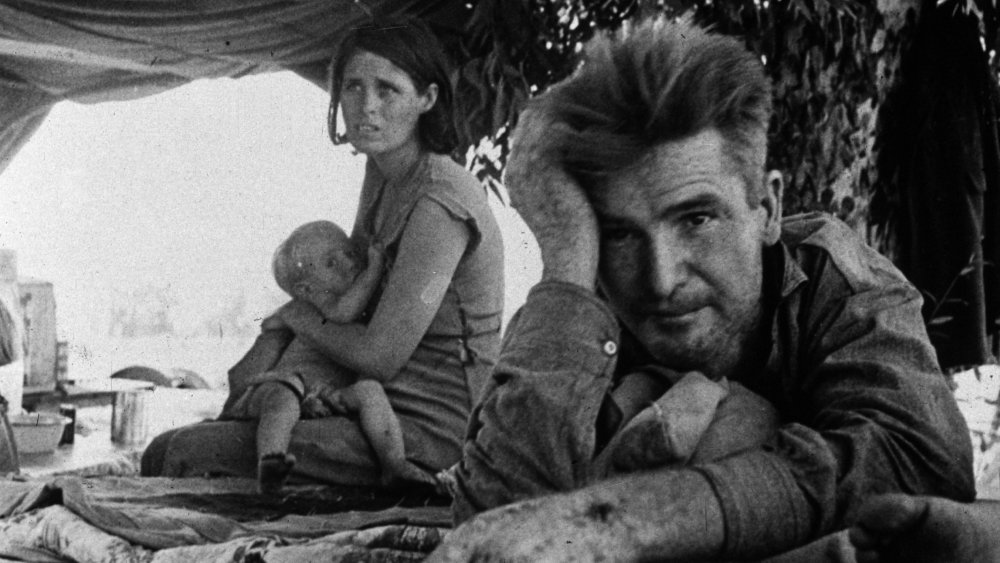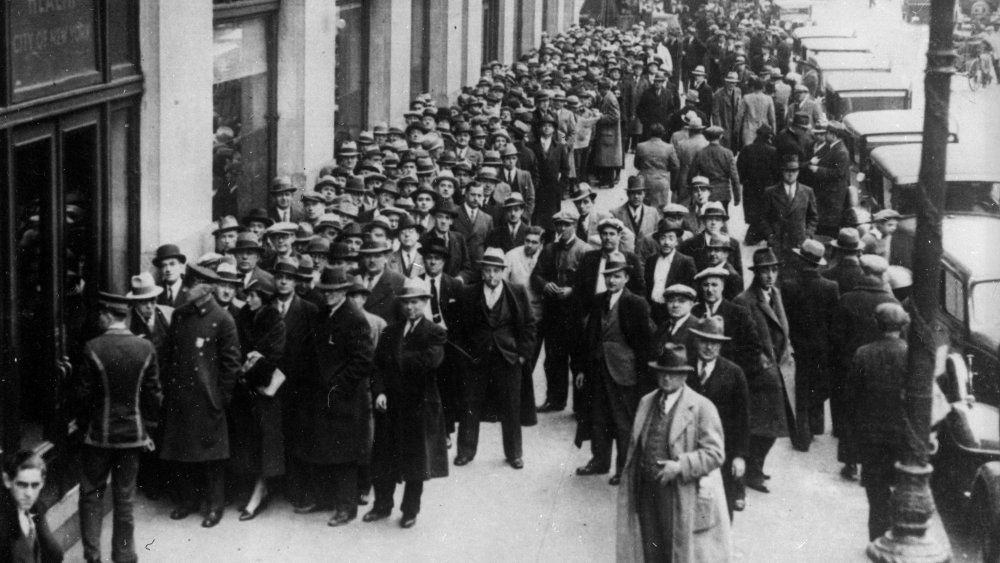How Many People Were Unemployed During The Great Depression?
On March 26, 2020, the Guardian reported that during the course of a week, an unprecedented 3.3 million Americans filed unemployment claims, eclipsing the record of 695,000 claims set in October 1982. As the economy hemorrhages jobs, the federal government's efforts to stem the bleeding have arguably been anemic. As New York Magazine's Eric Levitz observes, leaked drafts of the $2.2 trillion stimulus package designed to soften the blow show that bailed-out corporations will be permitted to fire up to 10 percent of their workforce over the course of six months without compromising their taxpayer-funded aid. And without an injection of additional aid to struggling states, many teachers and other public employees may see their positions get axed as a cost-cutting measure.
Andrew Stettner of the thin tank Century Foundation captured the gravity of that staggering figure, proclaiming, "The United States is in the thralls of a catastrophic unemployment crisis, the likes of which we haven't seen since the Great Depression." So just how bad did unemployment get back then?
A depressing number of people lost their jobs during the Great Depression
Prior to the Great Depression, the U.S. had reached the dizzying crescendo of an all-out lending bender. As the Encyclopedia Britannica details, throughout the Roaring '20s stock prices skyrocketed, with millions of shares ultimately being purchased with loans that would in turn be paid for by the rising price of those very same shares. A tiny portion of the population accumulated unfathomable wealth. PBS says that one tenth of one percent of society made as much money as the bottom 42 percent of the country.
On October 29, 1929, America's titanic economy slammed into a hubris-sized iceberg. When share prices inevitably began to drop, a frenzy of investor sell-offs hastened the sinking of the stock market. Meanwhile, President Herbert Hoover sucked. Failing to see the enormity of the situation, he emphasized a trickle-down approach to relief that bolstered banks and ignored the poor. By 1933, one out of every five banks in the nation had failed. Jobs evaporated like rain in the Dust Bowl, and the number of unemployed Americans eventually exceeded 15 million people, roughly a quarter of the country's workforce at the time.

